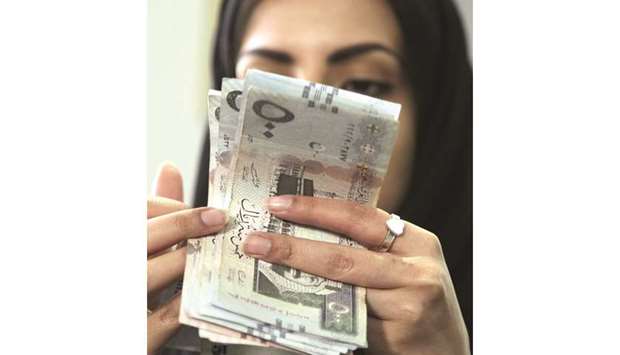After leading a rather shadowy existence in comparison to the phenomenal asset growth of Islamic banking and finance in the past years, the Islamic insurance, or takaful, industry, is expected to get into gear thanks to consolidation and regulatory improvement in some countries and the higher readiness in Muslim nations for risk coverage. The December 2017 acquisition of Al Hilal Takaful by Takaful Emarat in the UAE, a deal that created the largest takaful group in the country for life, health and general takaful for individual and corporate customers measured by gross written contributions of combined around $245mn, has also attracted international attention for the market potential of Islamic insurance, but also the obvious necessity for consolidation and modernisation in the industry.
The UAE is a good example: Currently, there are no less than 34 domestic and 27 foreign conventional and Islamic insurance companies touting for a customer pool of just 10.5mn people in the country. According to Fareed Lutfi, secretary general of the Emirates Insurance Association and the Gulf Insurance Federation, most of the Islamic insurers face difficulties to keep pace with the speed of digital transformation in the finance and insurance industry and need to adapt, ideally by pooling their strengths. Takaful Emarat managing director Mohammad al-Hawari said that one of the priorities after the merger will be to come up with a combined digital platform to provide more efficient and cost-effective services for insurance clients.
In another move, one of the world’s largest insurance companies, Allianz Group, in October last year increased its stake in its Saudi Arabian takaful joint-venture with Banque Saudi Fransi, Allianz Saudi Fransi Cooperative Insurance Company, by 18.5% to a majority of 51% to “underline its commitment” to the Saudi takaful market, the world’s largest by gross written contributions, and develop a number of new products for private and corporate customers, according to Hicham Raissi, head of business division for Africa, India and the Mena region for Allianz Group.
But like in the UAE, Saudi Arabia’s insurance market remains largely fragmented, with 33 listed takaful operators competing against each other. Ahmed Alkholifey, governor of the Saudi Arabian Monetary Authority, said that he does not believe that all of them are “capable of surviving in their current condition” and that the market needed “more consolidation and foreign input to help create solid companies.”
A recent report by the Deloitte Middle East Islamic Finance Knowledge Center outlined the key challenges for takaful operators to break into the mainstream and build mass coverage globally. Among those are the need for improved governance, capital adequacy, training and leadership, new business models and product innovation, strategic planning and emphasis on target markets, as well as improved technological capabilities.
To that end, the takaful market in Saudi Arabia and the UAE already saw regulatory changes such as the introduction of actuarial reserving which led to an increase in premiums and provided some financial respite for operators. Bahrain, Oman and Qatar also introduced new regulations specific to the takaful industry, while Kuwait’s new insurance law draft also provides for specific regulations for the sector.
Overall, the global takaful market had a volume of $14.9bn in gross written contributions as per latest available figures of 2015, according to the Global Takaful Report 2017 by US-based actuarial and consulting firm Milliman issued in July last year.
The Gulf Cooperation Council (GCC) was the largest market for the global takaful industry, representing around 77% or $11.5bn of the world’s takaful gross written contributions. Saudi Arabia held by far the largest share of $9.7bn. The markets in the other countries in the GCC were still relatively small with takaful premium volume of less than $1bn each, whereby the UAE was the second largest with around $700mn in gross written contributions.
The second-largest chunk of the global takaful market is mainly spread over Malaysia, Indonesia and Brunei with a combined global market share of 15% in premiums, and the small rest over Bangladesh, Pakistan, Turkey, Sri Lanka, Syria, Yemen, Jordan, Lebanon, Iran, Sudan, Egypt, Algeria and Tunisia. Specific takaful regulations have also been introduced in several African countries such as Kenya and Gambia, with Tanzania expecting to issue detailed takaful regulations in the near future, indicating the commitment to grow the industry by these African governments. Apart from that, there are a few takaful operators scattered over Europe, for example Noorassur in France, KT Bank in Germany, NDI Takaful & Retakaful in the UK and Solidarity Takafol in Luxembourg. Anticipating an average annual growth rate for the global takaful market of an estimated 13% like in previous years, premium volume would have reached around $19bn by the end of 2017.
The future potential of takaful in the GCC is certainly driven by the reduction of state benefits which increases demand for products such as life and health insurance. As family takaful is largely non-existent in the GCC, there are growth opportunities for this segment in the region, particularly given the lack of retirement-related Islamic insurance products. However, most experts see Africa – both North and Sub-Saharan– as the regions with the currently greatest growth potential for takaful, while there are many other new jurisdictions which have also introduced takaful specific guidelines in recent years, such as Indonesia and Turkey, to spur industry growth.

A Saudi woman counts riyal banknotes at a money exchange shop in Riyadh (file). Like in the UAE, Saudi Arabia’s insurance market remains largely fragmented, with 33 listed takaful operators competing against each other.


